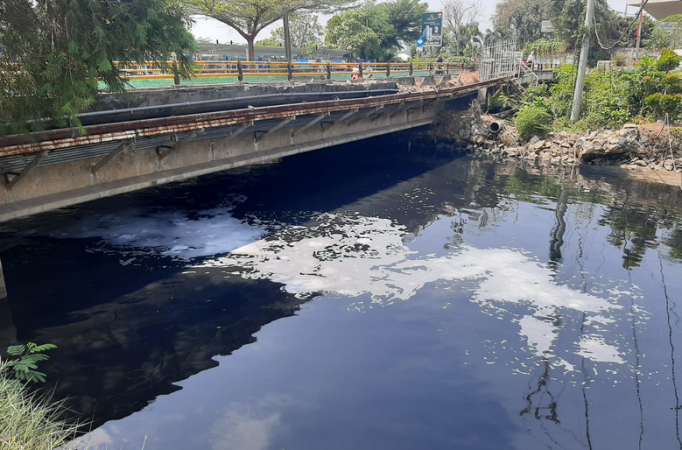
Natural disasters are becoming more frequent and severe due to the intensifying effects of climate change. From hurricanes and floods to wildfires and droughts, these events not only devastate communities but also strain global resources. Addressing these challenges requires robust climate management strategies that focus on mitigation and adaptation. This article explores the relationship between natural disasters and climate change and highlights effective strategies for mitigating their impacts through sustainable climate management.
Understanding the Link Between Climate Change and Natural Disasters
Climate change amplifies the intensity and frequency of natural disasters by altering weather patterns, increasing global temperatures, and destabilizing ecosystems. Key connections include:
- Rising Temperatures: Higher temperatures intensify heatwaves and droughts, leading to severe water shortages and agricultural failures.
- Melting Ice Caps and Rising Sea Levels: Accelerated melting of polar ice contributes to rising sea levels, increasing the risk of coastal flooding and erosion.
- Increased Precipitation Variability: Changes in precipitation patterns result in more extreme rainfall events, leading to floods and landslides.
- Intensified Storms: Warmer ocean temperatures fuel stronger hurricanes and typhoons, causing widespread destruction.
Understanding these links is crucial for developing effective climate management strategies to mitigate the impacts of natural disasters.
The Role of Climate Management in Disaster Mitigation
Climate management involves strategies and actions designed to reduce greenhouse gas emissions, enhance resilience, and adapt to climate change impacts. These efforts are vital for mitigating the severity of natural disasters and protecting vulnerable communities.
a. Mitigation Strategies
Mitigation focuses on reducing the root causes of climate change by limiting greenhouse gas emissions. Key approaches include:
- Transitioning to Renewable Energy: Solar, wind, and hydropower reduce dependence on fossil fuels, lowering carbon emissions.
- Enhancing Energy Efficiency: Retrofitting buildings, promoting energy-saving technologies, and optimizing transportation systems minimize energy consumption.
- Afforestation and Reforestation: Planting trees absorbs carbon dioxide, stabilizes soil, and reduces the risk of landslides.
b. Adaptation Strategies
Adaptation involves preparing for and adjusting to the impacts of climate change to minimize harm. Examples include:
- Building Resilient Infrastructure: Designing flood-resistant buildings, reinforcing levees, and creating stormwater management systems.
- Improving Agricultural Practices: Implementing climate-smart agriculture to ensure food security despite changing weather patterns.
- Early Warning Systems: Leveraging technology to predict disasters and disseminate timely alerts to at-risk populations.
Key Climate Management Strategies for Disaster Mitigation
A comprehensive approach to mitigating natural disasters through climate management involves collaboration across sectors and innovative solutions. Here are some effective strategies:
a. Nature-Based Solutions
Nature-based solutions use ecosystems to reduce disaster risks and enhance resilience. Examples include:
- Restoring Wetlands: Wetlands act as natural buffers, absorbing excess rainwater and reducing flood risks.
- Mangrove Conservation: Mangroves protect coastal areas from storm surges and erosion while sequestering carbon.
- Urban Green Spaces: Parks, green roofs, and urban forests mitigate urban heat islands and improve water absorption.
b. Disaster Risk Reduction (DRR) Frameworks
Integrating climate management into DRR frameworks ensures a proactive approach to disaster mitigation. This includes:
- Risk Assessments: Identifying and mapping areas prone to natural disasters to prioritize interventions.
- Community-Based Programs: Engaging local communities in disaster preparedness and response planning.
- Capacity Building: Training stakeholders, including government officials and first responders, to manage disaster risks effectively.
c. Leveraging Technology and Data
Advancements in technology and data analytics enhance climate management strategies. Key applications include:
- Remote Sensing: Satellites monitor weather patterns, track storms, and assess disaster damage in real time.
- Geographic Information Systems (GIS): GIS maps visualize disaster-prone areas, aiding in planning and resource allocation.
- Artificial Intelligence (AI): AI predicts disaster scenarios, optimizes response strategies, and improves early warning systems.
d. Policy and Governance
Strong policies and governance frameworks are essential for implementing climate management strategies. This involves:
- Setting Emission Reduction Targets: National and international commitments, such as the Paris Agreement, drive climate action.
- Incentivizing Sustainable Practices: Tax breaks, subsidies, and grants encourage businesses and individuals to adopt eco-friendly measures.
- Enforcing Land-Use Regulations: Preventing construction in high-risk areas reduces exposure to disasters.
Case Studies: Successful Climate Management for Disaster Mitigation
Several regions have implemented successful climate management strategies to mitigate natural disasters. Notable examples include:
a. Bangladesh’s Cyclone Preparedness Program
Bangladesh, prone to cyclones, has significantly reduced mortality rates through:
- Early warning systems that provide timely alerts to communities.
- Cyclone shelters and raised housing that protect residents during storms.
- Mangrove reforestation to act as natural barriers against storm surges.
b. The Netherlands’ Flood Management System
The Netherlands has implemented innovative flood management strategies, such as:
- Building dikes, dams, and storm surge barriers to protect low-lying areas.
- Restoring natural floodplains to absorb excess water.
- Incorporating green roofs and permeable pavements in urban areas to manage stormwater.
c. Kenya’s Climate-Smart Agriculture
Kenya has adopted climate-smart agricultural practices to mitigate drought impacts, including:
- Drought-resistant crops and efficient irrigation systems.
- Soil conservation techniques, such as terracing and agroforestry.
- Weather information services that help farmers make informed decisions.
Challenges in Implementing Climate Management Strategies
While climate management strategies offer significant benefits, they also face challenges:
- Financial Constraints: Implementing large-scale climate initiatives requires substantial funding, which is often limited in developing countries.
- Lack of Political Will: Short-term priorities and conflicting interests can hinder the adoption of long-term climate policies.
- Data Gaps: Inadequate data and monitoring systems impede accurate risk assessments and planning.
- Public Awareness: Limited awareness of climate risks and solutions reduces community engagement and support.
The Future of Climate Management and Disaster Mitigation
As climate change accelerates, the importance of climate management in disaster mitigation will grow. Future advancements include:
- Innovative Technologies: Emerging tools, such as blockchain for carbon tracking and drones for disaster response, will enhance efficiency.
- Global Collaboration: Strengthening international partnerships and knowledge sharing will drive collective action.
- Integrated Solutions: Combining gray and green infrastructure will create holistic approaches to disaster mitigation.
- Climate Justice: Ensuring that vulnerable populations receive equitable support and resources will be central to effective climate management.
Conclusion
Mitigating natural disasters through climate management strategies is essential for protecting lives, livelihoods, and ecosystems in a changing climate. By integrating mitigation and adaptation measures, leveraging technology, and fostering global collaboration, we can build resilience against the growing threat of natural disasters. While challenges remain, innovative and inclusive approaches offer a path toward a safer and more sustainable future for all.





